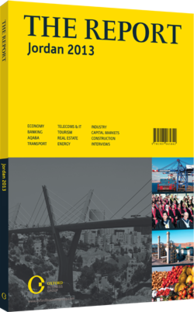OBG talks to Ziad Fariz, Governor, Central Bank of Jordan (CBJ)

Interview: Ziad Fariz
How will the lifting of fuel subsidies affect Jordan’s domestic liquidity and interest rates?
ZIAD FARIZ: The burden from fuel subsidies on the gener-al budget increased sharply in 2012 as a result of the recurrent disruption to Jordan’s natural gas supply from Egypt, accompanied by the continuous rise in international oil prices. As a result, the total fuel sub-sidy bill reached around 3.2% of GDP in 2012, up from 2.8% of GDP in 2011. Consequently, the government budget deficit increased to about 8.2% of GDP in 2012, from 6.8% of GDP the previous year.
However, Jordan phased out fuel subsides in Novem-ber 2012, a step that was in sync with the Kingdom’s national reform programme. The programme targets financial and economic stability, and benefited from IMF support in 2012. Moreover, this measure serves the multi-purpose of reducing the government’s financ-ing needs, releasing more liquidity for the private sec-tor, and eventually lowering domestic financing costs.
In what way has continued inflation affected the economic stability of the kingdom?
FARIZ: The CBJ regularly reviews the key interest rate policy to ensure that the interest rate level and struc-ture are comparable with economic growth and suf-ficient to contain any inflationary pressures.
In 2012 the average CPI inflation rate reached 4.8%. As a result of removing fuel subsidies, inflation for 2013 is expected to reach approximately 6%, which, is still within a reasonable range for Jordan.
To what extent is progress being made to create greater access to financial capital for small and medium-sized enterprises (SMEs)?
FARIZ: The CBJ has taken a number of policy meas-ures to further open up channels for SME finance. These include the issuance of a Credit Informa-tion Law and Credit Information By-Law, which will pave the way for licensing private information firms and eventually enhancing SMEs’ access to finance.
In addition, The CBJ has eased some of its credit and capital adequacy requirements to create financial space for SME’s. The CBJ decided to waive from bank provisioning the portion of guaranteed credit (by the Overseas Private Investment Corporation) that is grant-ed to SME’s. This applies to general banking risk reserves, impairment provision for credit facilities cat-egorised as “watch list”, and impairment provision for non-performing credit facilities for the first year of clas-sifying as non-performing loans. Moreover, for the purpose of computing the capital adequacy ratio, said credit risk is weighted at a rate of 0%.
Notably, the CBJ has agreed with the World Bank to get a $70m loan to on-lend to micro, small and medi-um-sized enterprises (MSMEs) through local banks. This project is aimed at increasing’ access to finance, offer-ing new vehicles to extend finance on a large scale.
What measures are being taken to sustain the appetite for Jordanian dinar-denominated assets?
FARIZ: To sustain the appetite for the Jordanian dinar, the CBJ has raised interest rates on key monetary pol-icy instruments over phases. Indeed, the first increase in February 2012 was by 50 basis points and applied to all monetary policy instruments. In May and Decem-ber 2012, however, the CBJ raised the interest rate on the overnight deposit window facility by 50 and 75 basis points, respectively, while maintaining interest rates on its other monetary policy instruments. These meas-ures are predominantly aimed at supporting monetary and financial stability, and to ensure a competitive return on dinar-denominated assets.
The current structure of interest rates on monetary policy instruments includes a re-discount rate of 5%, an interest rate on overnight repurchase agreements of 4.75% and an overnight deposit window rate of 4%.
The exchange rate peg remains the fixed anchor for Jordan’s monetary policy. The fixed exchange rate regime has served the Jordanian economy well, and it continues to underpin financial stability.
You have reached the limit of premium articles you can view for free.
Choose from the options below to purchase print or digital editions of our Reports. You can also purchase a website subscription giving you unlimited access to all of our Reports online for 12 months.
If you have already purchased this Report or have a website subscription, please login to continue.

